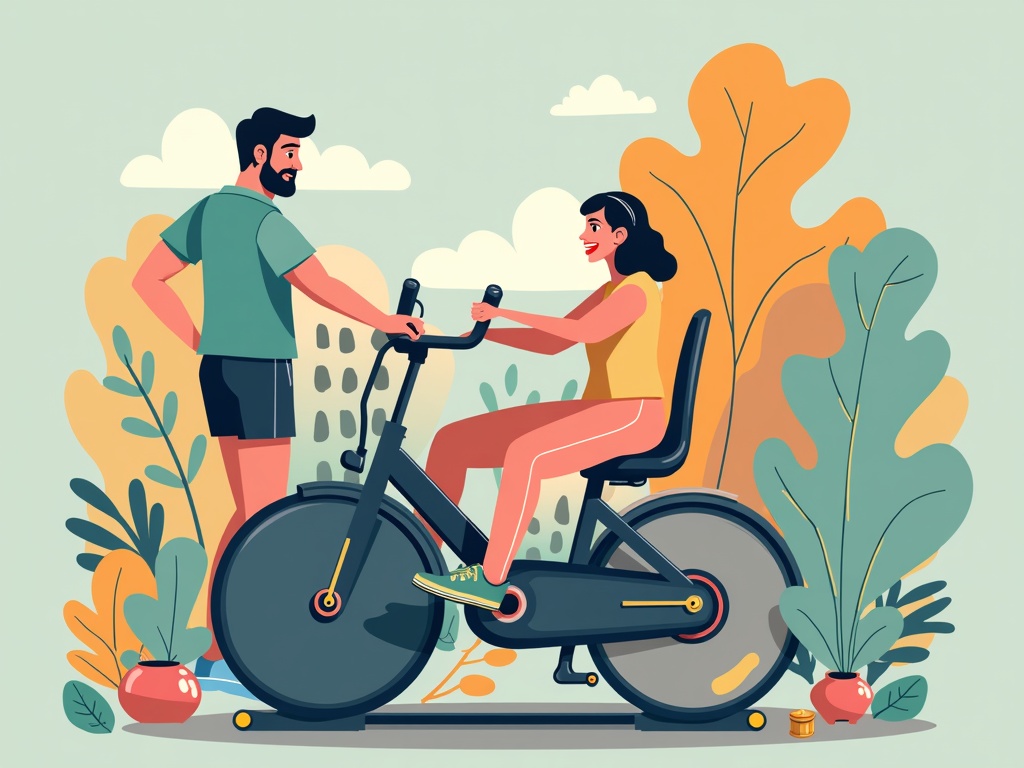Recumbent Bike Benefits for Bad Hips: A Comprehensive Guide
Hip pain can throw a serious wrench into your fitness routine. Every step, every squat, every seemingly simple movement can become a painful reminder of your limitations. But what if I told you there's a way to stay active, improve your cardiovascular health, and even strengthen your hips without the jarring impact of traditional exercises? Enter the recumbent bike – your new best friend for low-impact, hip-friendly fitness.
Understanding Hip Pain and Exercise Limitations
Before diving into the benefits of recumbent bikes, let’s quickly address why hip pain makes exercise so challenging. The hip joint is a complex ball-and-socket joint responsible for a wide range of movements, including walking, running, and twisting. When injured or affected by conditions like arthritis, bursitis, or labral tears, these movements become difficult and painful.
Traditional exercises, especially high-impact activities like running or jumping, can exacerbate hip pain by placing excessive stress on the joint. This can lead to further inflammation, cartilage damage, and a frustrating cycle of pain and inactivity. That’s where low-impact options like recumbent biking come into play.
What is a Recumbent Bike?
A recumbent bike is a stationary exercise bike that positions the rider in a reclined position. Unlike upright bikes where you sit on a small seat with your body upright, recumbent bikes feature a larger, more comfortable seat with back support. The pedals are positioned in front of you, rather than underneath, resulting in a more horizontal leg movement.
Recumbent Bike Benefits for Bad Hips
So, how exactly can a recumbent bike help with bad hips? Here's a breakdown of the key benefits:
Reduced Impact and Stress on the Hip Joint
This is the most significant benefit. The reclined position on a recumbent bike distributes your weight more evenly, minimizing the stress on your hip joint. Unlike walking or running, where the impact is absorbed primarily by your hips, knees, and ankles, a recumbent bike allows for a smooth, controlled motion with minimal jarring.
Improved Hip Flexibility and Range of Motion
Gentle, controlled cycling on a recumbent bike can help improve hip flexibility and range of motion. The circular pedaling motion lubricates the joint, reduces stiffness, and promotes the flow of synovial fluid, which nourishes the cartilage.
Strengthening of Hip Muscles
While low-impact, recumbent biking still engages key hip muscles, including the glutes, hamstrings, and quadriceps. This helps to strengthen the muscles that support the hip joint, improving stability and reducing the risk of further injury.
Enhanced Cardiovascular Health
Even with bad hips, you can still get a great cardiovascular workout on a recumbent bike. Regular cycling improves your heart health, lowers blood pressure, and boosts your overall endurance. You can adjust the resistance levels to challenge yourself without putting excessive strain on your hips.
Weight Management
Maintaining a healthy weight is crucial for managing hip pain, as excess weight puts added stress on the joint. Recumbent biking is an excellent way to burn calories and support your weight loss goals, further alleviating pressure on your hips.
Increased Blood Flow to the Hip Area
Cycling promotes increased blood flow to the hip area, delivering essential nutrients and oxygen to the tissues. This can help to accelerate healing, reduce inflammation, and alleviate pain.
Comfort and Support
The comfortable seat and back support on a recumbent bike make it a more enjoyable and sustainable form of exercise for people with hip pain. You're less likely to experience discomfort or fatigue, allowing you to exercise for longer periods and reap greater benefits.
Who Can Benefit from Recumbent Biking?
Recumbent bikes are a fantastic option for a wide range of individuals with hip problems, including:
- Individuals with osteoarthritis or rheumatoid arthritis in the hips
- People recovering from hip surgery or injury
- Those with hip bursitis or tendonitis
- Individuals with labral tears in the hip
- Seniors with age-related hip pain
- Anyone looking for a low-impact way to exercise with hip pain.
Tips for Using a Recumbent Bike with Bad Hips
To maximize the benefits of recumbent biking and minimize the risk of further injury, keep these tips in mind:
Proper Setup and Posture
Adjust the seat height and fore-aft position so that your legs are almost fully extended at the bottom of the pedal stroke, but not locked. Maintain a comfortable, upright posture with your back supported by the seat. Avoid hunching forward or slouching.
Start Slowly and Gradually Increase Intensity
Begin with short, low-intensity workouts and gradually increase the duration and resistance as your hips get stronger. Don't push yourself too hard, especially in the beginning. Listen to your body and stop if you experience any sharp or worsening pain.
Warm-up and Cool-down
Always warm up before each workout with gentle stretches or light cardio, such as marching in place or leg swings. Cool down afterwards with similar stretches to improve flexibility and reduce muscle soreness.
Proper Pedaling Technique
Focus on using a smooth, circular pedaling motion, engaging your glutes, hamstrings, and quads. Avoid jerky or forceful movements. You can use clipless pedals for a more efficient and controlled pedal stroke.
Vary Your Workouts
Mix up your workouts to avoid overuse injuries and keep things interesting. You can alternate between steady-state cardio, interval training, and hill climbs (if your bike has adjustable resistance). Incorporate different resistance levels and cadences to challenge different muscle groups.
Listen to Your Body
This is the most important tip of all. Pay attention to your body and stop if you experience any pain, discomfort, or fatigue. Don't try to push through the pain, as this can worsen your condition. Rest and recover as needed.
Consult with a Healthcare Professional
Before starting any new exercise program, it's essential to consult with your doctor or physical therapist, especially if you have a pre-existing hip condition. They can assess your condition, provide personalized recommendations, and help you develop a safe and effective exercise plan.
Choosing the Right Recumbent Bike
With so many recumbent bikes on the market, it’s important to choose one that’s right for your needs and budget. Here are a few factors to consider:
- Seat Comfort and Adjustability: Look for a bike with a comfortable, supportive seat that can be easily adjusted to your height and leg length.
- Resistance Levels: Choose a bike with a wide range of resistance levels to accommodate your fitness level and allow for progressive overload.
- Console Features: Consider the features offered by the console, such as speed, distance, time, heart rate, and calorie tracking. Some bikes also offer pre-programmed workouts and connectivity to fitness apps.
- Stability & Build Quality: A sturdy frame will minimize wobble and provide a safer ride.
- Price: Recumbent bikes range in price from a few hundred dollars to several thousand. Set a budget and find a bike that offers the best value for your money.
Beyond the Bike: Comprehensive Hip Care
While recumbent biking can be a valuable tool for managing hip pain, it's important to remember that it's just one piece of the puzzle. A comprehensive approach to hip care may also include:
- Physical therapy
- Pain management techniques (medication, injections)
- Lifestyle modifications (weight loss, ergonomic adjustments)
The Road to Recovery Starts Now
Don't let hip pain keep you from living an active life. Recumbent biking offers a safe, effective, and enjoyable way to exercise, strengthen your hips, and improve your overall health. By following the tips outlined in this guide and working closely with your healthcare team, you can take control of your hip pain and get back to doing the things you love. It might not be a quick fix, but a consistent approach to low-impact exercise like recumbent biking can be a game-changer on your journey towards happier, healthier hips.


